“OUT! OUT! Darned Weevil (and Pantry Moths)!”
A year or two ago (I can’t remember when, for sure), I wrote about a tiny bug that was causing a big problem in my pantry—weevil. I keep researching this subject, looking for any and all effective preventions, because for some reason flour weevil is a persistent problem at our house.
I’ve since learned about another common pantry problem—the pantry moth. Pantry moths (also called Indian meal moths) can thrive almost anywhere inside a home, but your pantry or kitchen cabinets are the easiest place to spot them -- or see the aftereffects of them living there. To identify a pantry moth infestation:
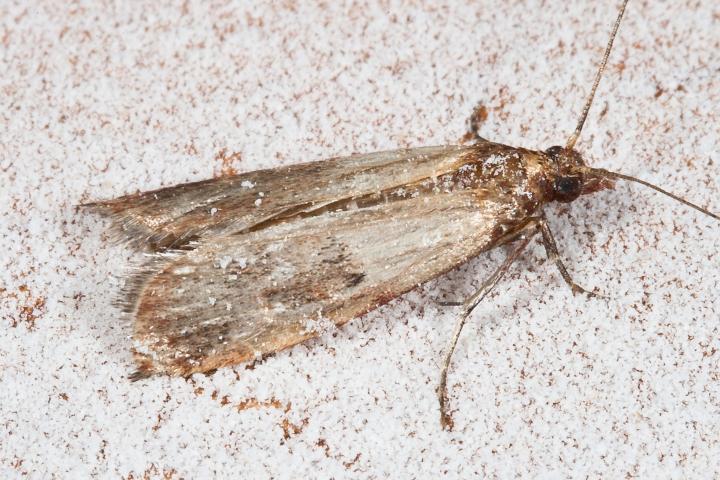
You can inadvertently bring pantry moths into the house by purchasing dry groceries that are already infested with adults moths or larvae. This can happen even with sealed bags and boxes. Common examples of food products that have been found to contain moths include: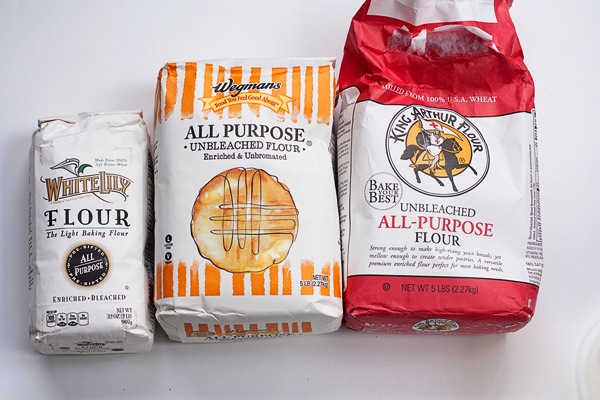
Besides keeping things ultra-clean (and please know I’m in no way discounting this step—it’s a biggie), there is a handy product we can use to keep our grain products bug-free—oxygen absorbers. You’ve seen them. They’re the little flat squares of “something” that we toss after we open that bottle of vitamin C, new purse, pair of shoes, or other consumer goods or that that we just purchased. (They always state “Do not eat”.)
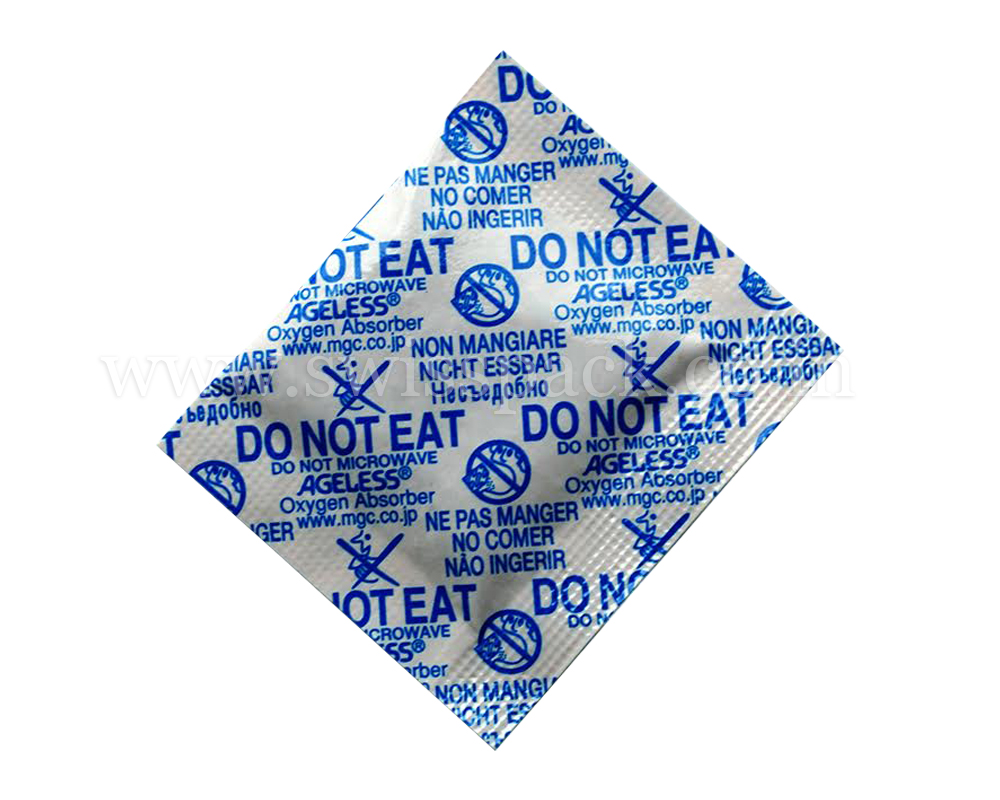
An oxygen absorber is a small packet of material used to prolong the shelf life of food. They are crucial to food packaging. They’re used to prevent food color change, to stop oils in foods from becoming rancid, to retard the growth of oxygen-using aerobic microorganisms such as fungi, and to prevent pantry pests (weevil) from taking up residence.
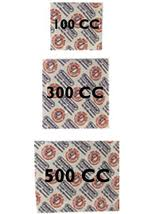
Oxygen absorbers are made in different formulations to match the water activity of the foods or goods they are protecting. Some are designed to be used in dry foods such as nuts and dried grains, others with moister foods such as bread and processed meats. The active ingredient is iron powder; most formulations include a little bit of water. Some other ingredient may be added to make the oxygen absorbers work more efficiently as well. You’ll see they come in different strengths as well, 100cc to 500cc. And they usually come in packages of 100.
The thing to remember, however, is that the container your product is stored in is as crucial as the use of the oxygen absorber. They work best and last the longest in a container that has high barrier packaging (with a low oxygen transmission rate) and an efficient seal technique. In other words, a glass jar with a tight-fitting lid is much more effective than the typical paper bag the flour, oats, etc. comes in. Other good storage containers are heavy plastic buckets with tight-fitting lids.
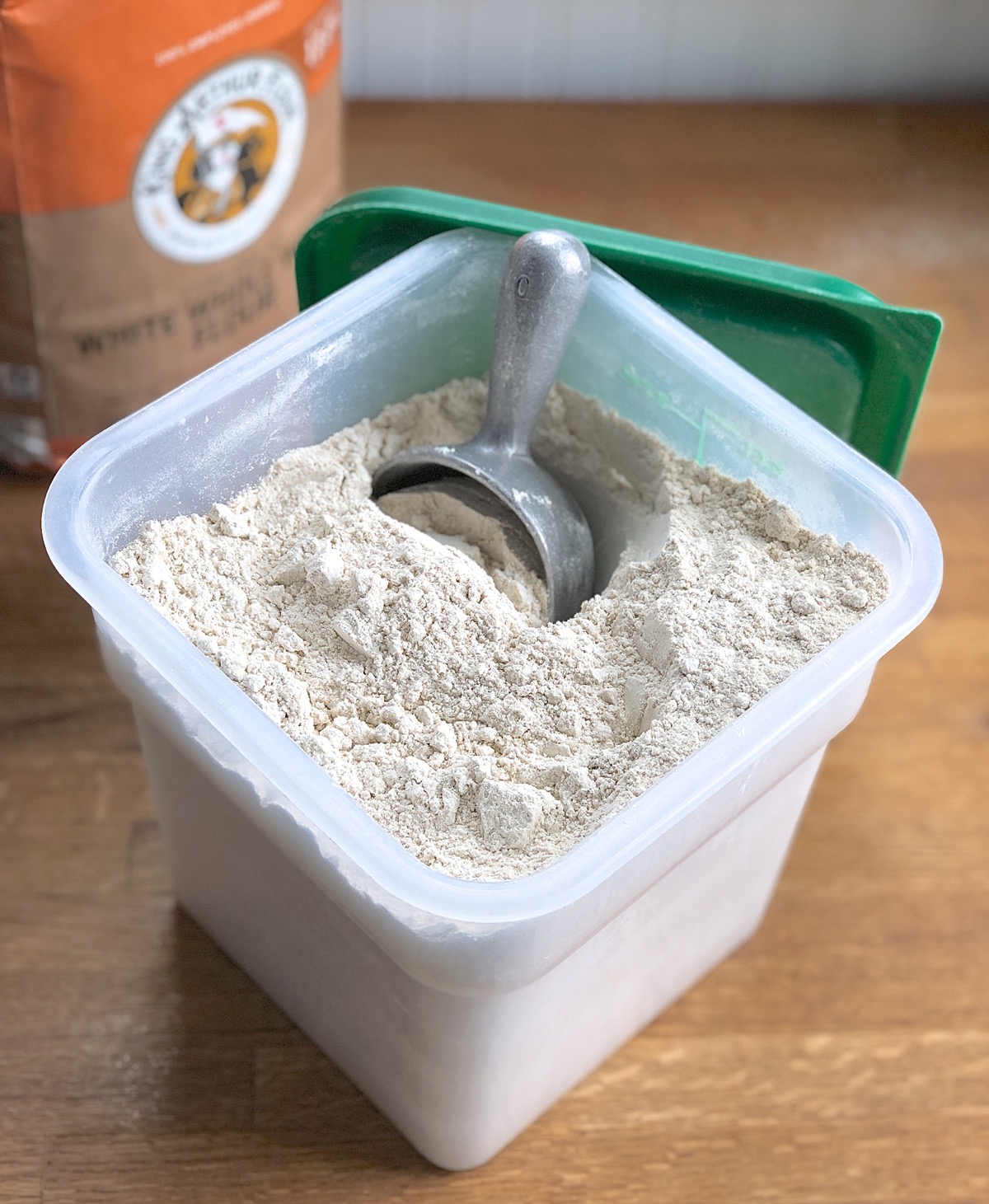
There are lots of places where we can get these. Online I like Honeyville Wheat (www.honeyville.com) and www.amazon.com (just type in oxygen absorbers). They’re also available at preparedness and emergency essential stores—you may have one in your area.
Two things I also do in an attempt to de-bug the flours and grains I bring home: If the bags or containers are small enough, I’ll put them, unopened, in the freezer for a day. This kills anything that may have been lurking in the product. But to KEEP the bugs out, you do need to transfer the product to the above-mentioned container(s).
And I place a few bay leaves in my grain containers. Weevil and pantry moths are averse to the smell of these leaves.
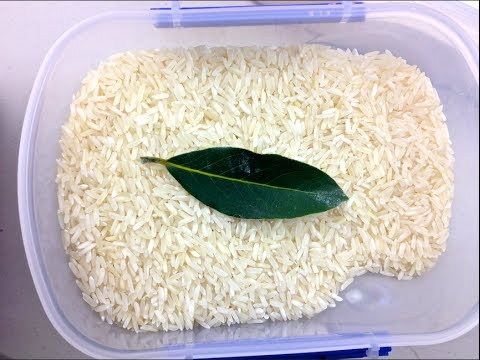
And one other tip that I haven’t tried, but that comes well recommended, is to leave a few cotton balls soaked with essential eucalyptus oil in the corners of your pantry.
(Oh, by the way, if you happen to have mistakenly eaten any weevil, it’s OK. You’re not gonna die or get sick.)
With the cost of food continuing to go up, it makes good sense to protect our purchases—food waste just isn’t good. So take a look at this idea and see if it isn’t a smart way to outsmart those darned weevil (and pantry moths)!
I’ve since learned about another common pantry problem—the pantry moth. Pantry moths (also called Indian meal moths) can thrive almost anywhere inside a home, but your pantry or kitchen cabinets are the easiest place to spot them -- or see the aftereffects of them living there. To identify a pantry moth infestation:

- Check your food containers or packaging (especially plastic bags or cardboard boxes) for small holes.
- Look for webbing on the food product or packaging – or in dark corners of your cupboards.
- Examine the food inside any suspicious-appearing containers for unusual odors or unexpected stickiness and clumping. You may spot actual moth larvae.
- Take a good look around your pantry to see if you can find any moths, which look like tiny brown or copper-colored butterflies. If you don't see any, they may simply be very adept at hiding; alternatively, you could have a larvae infestation.
You can inadvertently bring pantry moths into the house by purchasing dry groceries that are already infested with adults moths or larvae. This can happen even with sealed bags and boxes. Common examples of food products that have been found to contain moths include:

- flour
- pasta
- cereal
- cornmeal
- rice and other grains
- breads
- beans
- spices
- cookies
- dried fruit
- nuts and seeds
- chocolate
- powdered milk
Besides keeping things ultra-clean (and please know I’m in no way discounting this step—it’s a biggie), there is a handy product we can use to keep our grain products bug-free—oxygen absorbers. You’ve seen them. They’re the little flat squares of “something” that we toss after we open that bottle of vitamin C, new purse, pair of shoes, or other consumer goods or that that we just purchased. (They always state “Do not eat”.)

An oxygen absorber is a small packet of material used to prolong the shelf life of food. They are crucial to food packaging. They’re used to prevent food color change, to stop oils in foods from becoming rancid, to retard the growth of oxygen-using aerobic microorganisms such as fungi, and to prevent pantry pests (weevil) from taking up residence.

Oxygen absorbers are made in different formulations to match the water activity of the foods or goods they are protecting. Some are designed to be used in dry foods such as nuts and dried grains, others with moister foods such as bread and processed meats. The active ingredient is iron powder; most formulations include a little bit of water. Some other ingredient may be added to make the oxygen absorbers work more efficiently as well. You’ll see they come in different strengths as well, 100cc to 500cc. And they usually come in packages of 100.
The thing to remember, however, is that the container your product is stored in is as crucial as the use of the oxygen absorber. They work best and last the longest in a container that has high barrier packaging (with a low oxygen transmission rate) and an efficient seal technique. In other words, a glass jar with a tight-fitting lid is much more effective than the typical paper bag the flour, oats, etc. comes in. Other good storage containers are heavy plastic buckets with tight-fitting lids.

There are lots of places where we can get these. Online I like Honeyville Wheat (www.honeyville.com) and www.amazon.com (just type in oxygen absorbers). They’re also available at preparedness and emergency essential stores—you may have one in your area.
Two things I also do in an attempt to de-bug the flours and grains I bring home: If the bags or containers are small enough, I’ll put them, unopened, in the freezer for a day. This kills anything that may have been lurking in the product. But to KEEP the bugs out, you do need to transfer the product to the above-mentioned container(s).
And I place a few bay leaves in my grain containers. Weevil and pantry moths are averse to the smell of these leaves.

And one other tip that I haven’t tried, but that comes well recommended, is to leave a few cotton balls soaked with essential eucalyptus oil in the corners of your pantry.
(Oh, by the way, if you happen to have mistakenly eaten any weevil, it’s OK. You’re not gonna die or get sick.)
With the cost of food continuing to go up, it makes good sense to protect our purchases—food waste just isn’t good. So take a look at this idea and see if it isn’t a smart way to outsmart those darned weevil (and pantry moths)!
Sources:
- www.almanac.com
- www.savvyeat.com
- www.swisspack.co.in
- www.youtube.com
- www.kingarthurflour.com
 Alice Osborne
Alice Osborne
Weekly Newsletter Contributor since 2006
Email the author! alice@dvo.com
